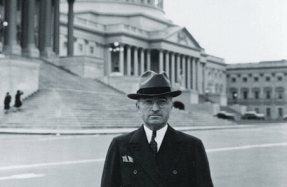OLD SOLDIERS


IN 1943, WHEN HUNDREDS OF B-17S ROUTINELY SORTIED OVER EUROPE, A B-17 MISSION IN THE SOUTHWEST PACIFIC THEATER NEVER AMOUNTED TO MORE THAN 30 FLYING FORTRESSES.
Fifth Air Force commander Lt. Gen. George C. Kenney argued for more B-17s following the Battle of the Bismarck Sea in March 1943, but military planners told him the Boeing bombers were going to Europe and he would be getting Consolidated B-24 Liberators to replace his aging Fortresses. So between May and October 1943, Kenney’s only B-17 bomb group, the 43rd, became a B-24 outfit. Some of its well-worn B-17s were sent home to serve as trainers and several became runabouts for generals, but 12 were selected for a special mission as armed transports.
Supplying coastwatchers and other Allied intelligence units operating deep in enemy territory was a vital but dangerous task, and potentially a deathtrap for the unarmed Douglas C-47 transports. The B-17s, capable of carrying a heavier load for a greater distance and armed with 10 or 11 machine guns, were a perfect fit.
In November 1943, six B-17Es and six B-17Fs—serial nos. 41-2408, 41-2432 , 41-2458 , 41-2657, 41-2662 , 41-2665 , 41-24353 , 41-24357 , 41-24358 , 41-24381 , 41-24420 and 41-24548—were thoroughly overhauled, modified and repainted by the 4th Air Depot Group at Townsville, Australia. “One of the first things they did was remove the ball turret because of the possibility of entanglement of the parachutes during a drop mission,” recalled Jack Hoover, a pilot in the 317th Troop Carrier Group. “All the other guns were left operational.
You’re reading a preview, subscribe to read more.
Start your free 30 days



